Learn how to dry sourdough starter for a convenient way to keep a starter without the constant feeding schedule. When you are ready to revive it, it will only take a few short days.
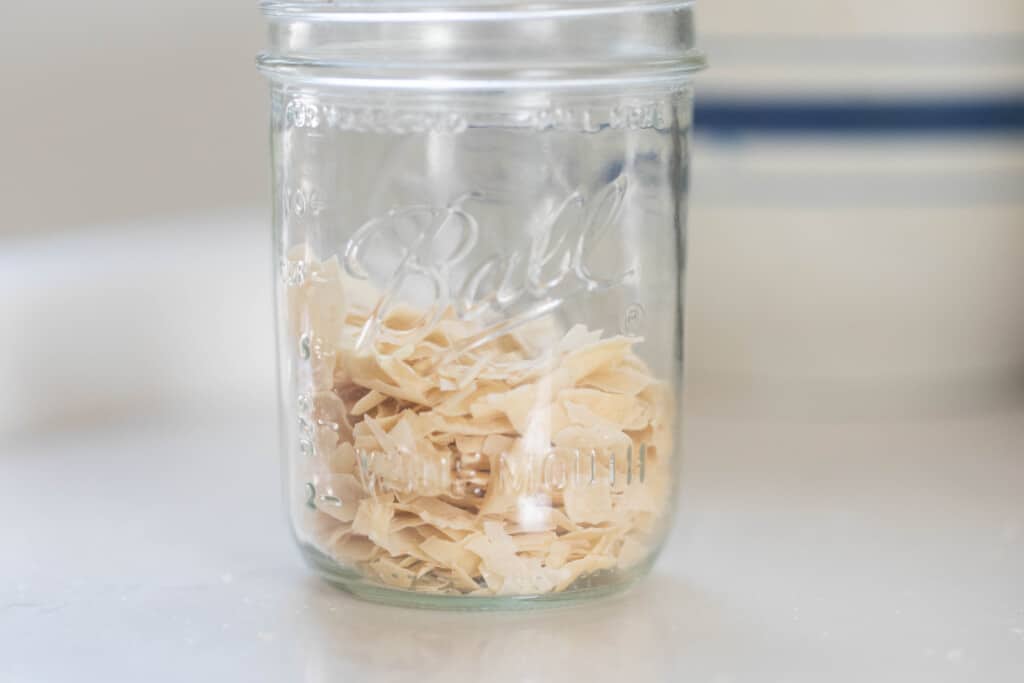
Table of Contents
When people first start getting into sourdough baking, it is easy not to get overwhelmed. New terms, baking schedules, and constant feeding of your new pet starter… who could blame them?
But what if there was a way to preserve your sourdough starter so you can leave it for long periods of time without feeding it? That is where a dry sourdough starter comes into play.
Drying an active starter preserves the natural yeasts and bacteria, putting it into a hibernated state. It is still a living and active food, just sleeping. And when you are ready to use it you can easily just reactivate it to start baking.
One thing to consider though, it is not like active yeast where you can just tear open a little basket, add it to your recipe and let the rising begin. But rather it will need to be reactivated, fed for a few days before it is alive again. It is still easier than starting a starter from scratch all over again.
In this post, we will talk about the three different ways to dry a sourdough starter so you can find the one that works best for you. One way even requires no equipment.
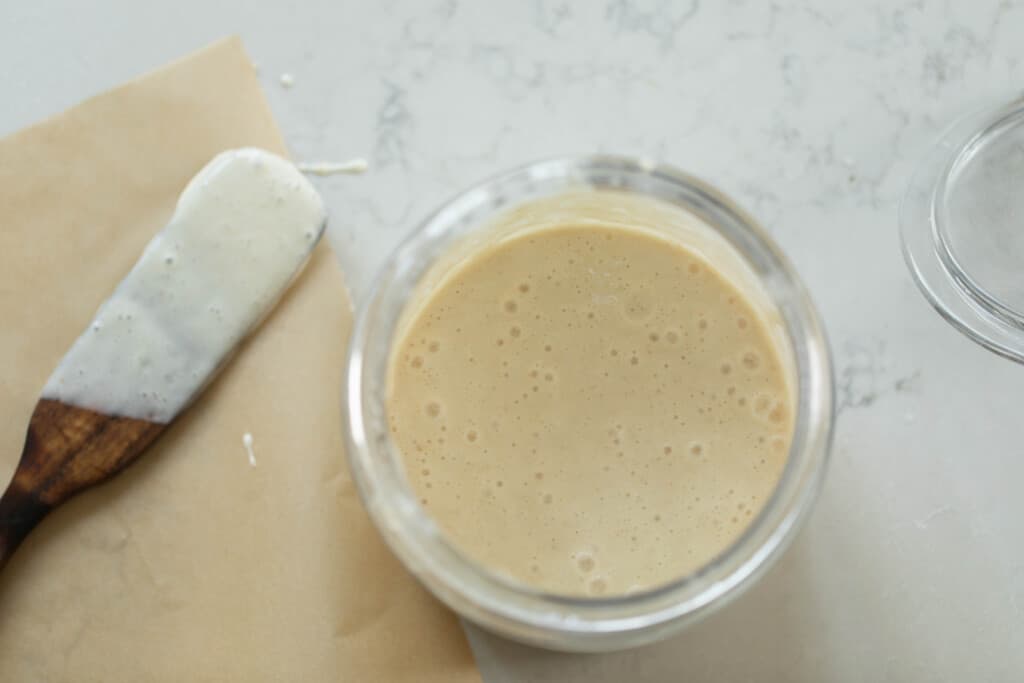
Benefits Of A Dry Sourdough Starter: Why You Would Want To Keep One
- Long term storage. Drying puts the starter in a dormant state that can
- Ship to a friend or relative. Shipping it dry is way easier than shipping it hydrated (although I’ve done this before too).
- Putting it away for a long term break (postpartum or a long family vacation) or
- To create a backup in case something should happen to your starter. For example, when a kid knocks the glass jar off the counter (not that this ever happened to me and I saved a very tiny bit and revived it), mold, fruit flies, etc.
Tips:
Before drying, you will want to make sure your sourdough starter is nice and active. Feed 4-6 hours before drying.
If your starter is a little on the neglected side, I would suggest feeding it every 12 hours for a few days until it perks up and gets nice and bubbly before making this.
For long term storage, dry AND freeze. Freezing a wet sourdough starter will last for about two weeks before it will go bad, but drying and freezing will keep the starter healthy much much longer.
FAQ:
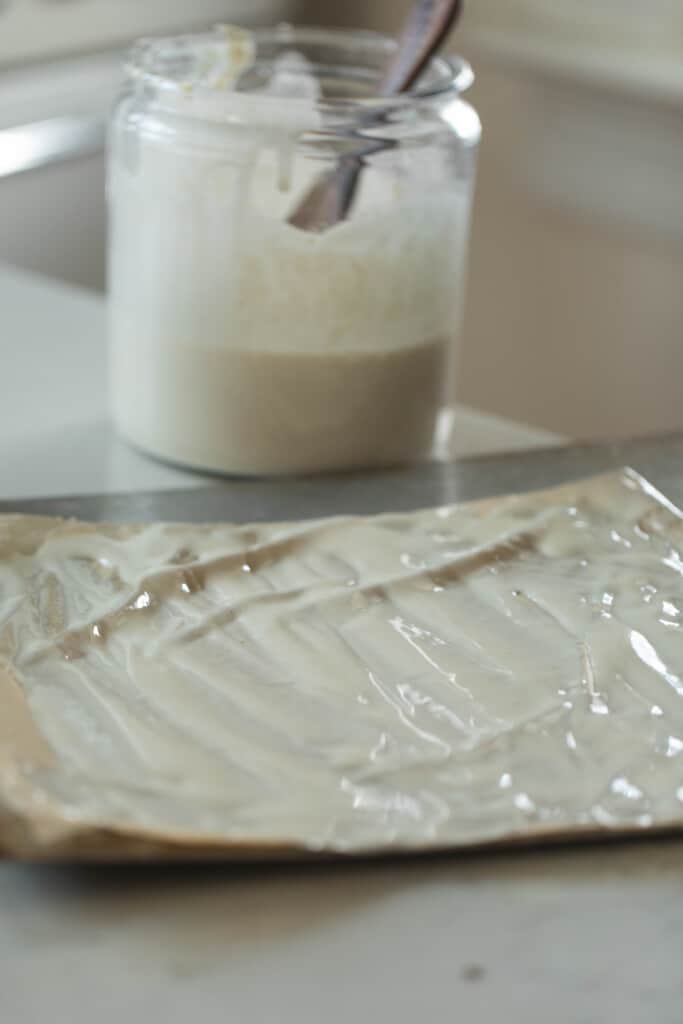
Is dry sourdough starter good?
Yes. It is easy to store and easy to use. You don’t have to worry about skipping feedings or killing it.
How long is a dry sourdough starter good for?
It is good indefinitely as long as it is properly stored in an air-tight container in a cool dry place. It is basically in a dormant state just waiting to be activated.
Can you buy dried sourdough starter?
Yes. You can typically find online sellers on Etsy, Cultures For Health, and some specialty natural grocery stores.
How do you use a dry sourdough starter?
Before using you will need to reactivate the starter. This is done by adding water, flour, and starter together. See below for full directions.
Can you dry sourdough starter in the oven?
Yes, but there is a caveat… You can’t turn it on. An oven will get too warm, potentially risking baking and killing the active yeasts in the starter. Place it in the oven with the light on.
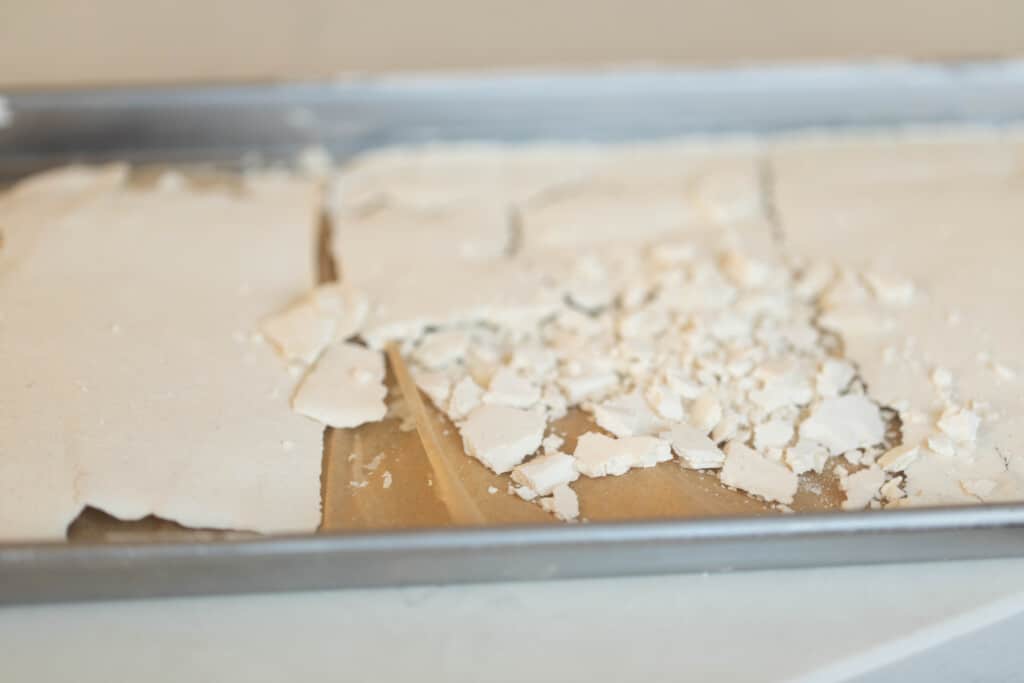
Ways To Dry A Sourdough Starter
Freeze dried: I actually do not recommend this, as it can give you inconsistent results.
Dehydrated
Air-dried
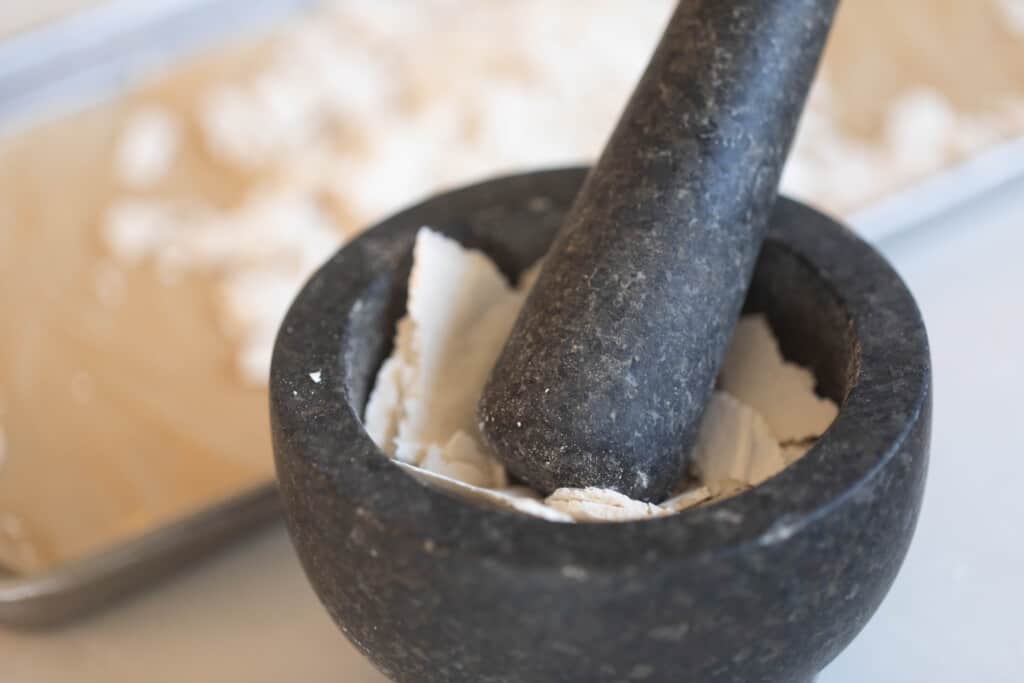
How To Dry Sourdough Starter Without A Dehydrator
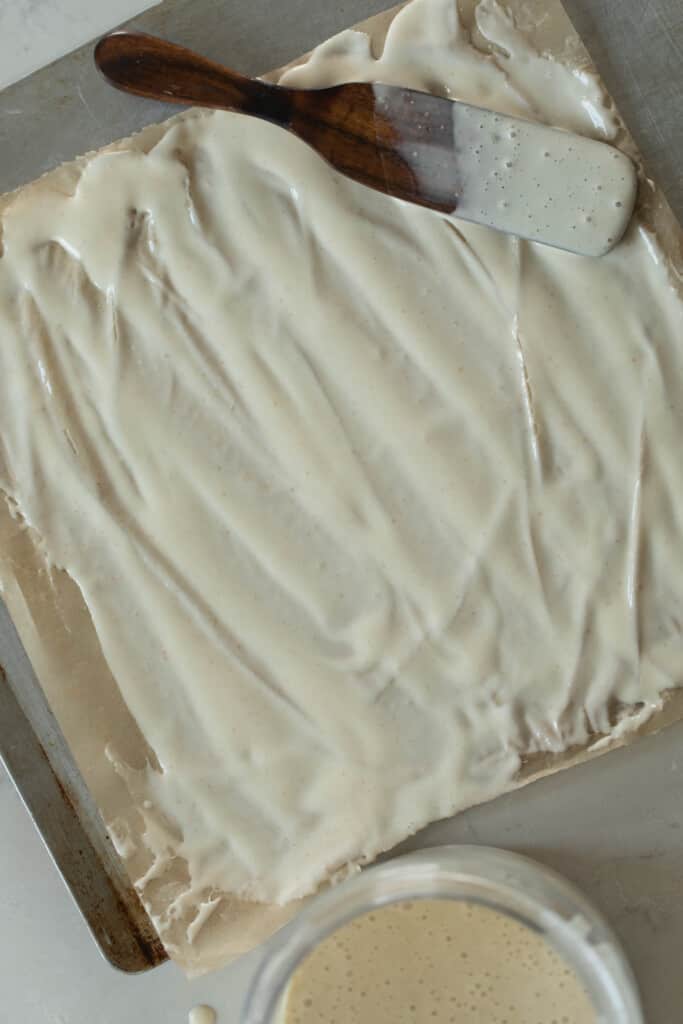
Spread active starter (fed 4-6 hours prior) onto parchment paper or silicon baking mat in a very thin layer. Use a spatula, bowl scraper or bench scraper to accomplish this.
Place in an out of the way place in your kitchen, such as on top of a cabinet, a shelf in an open pantry.
You want to make sure it has airflow, so it can dry out properly.
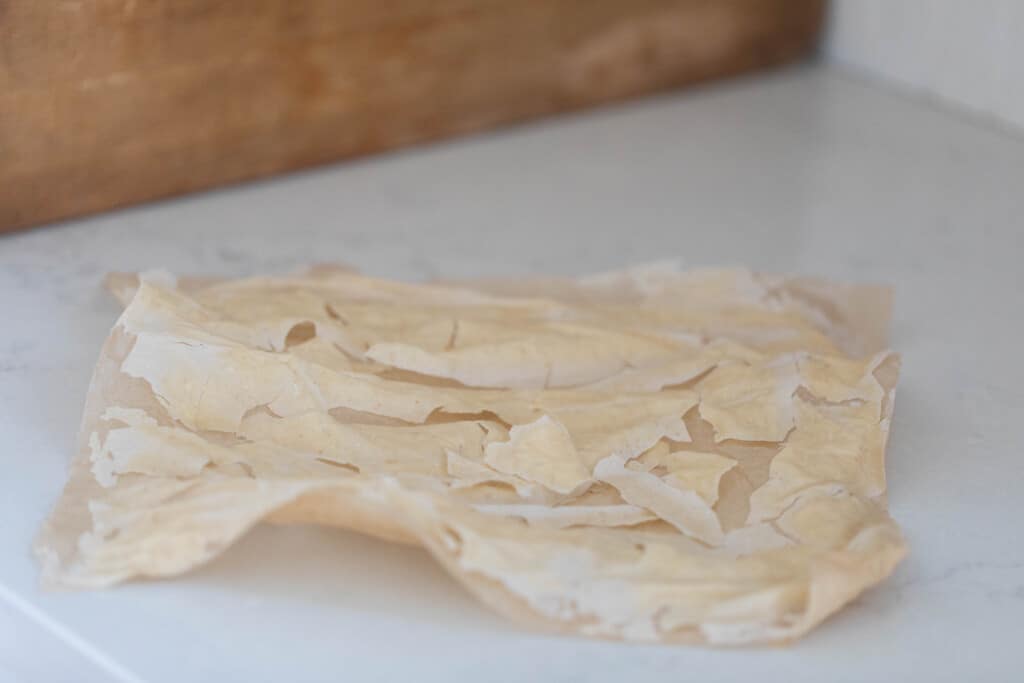
Allow it to dry for 24-48 hours.
Once completely dried, place in an air-tight container. You can blend it to make a powder.
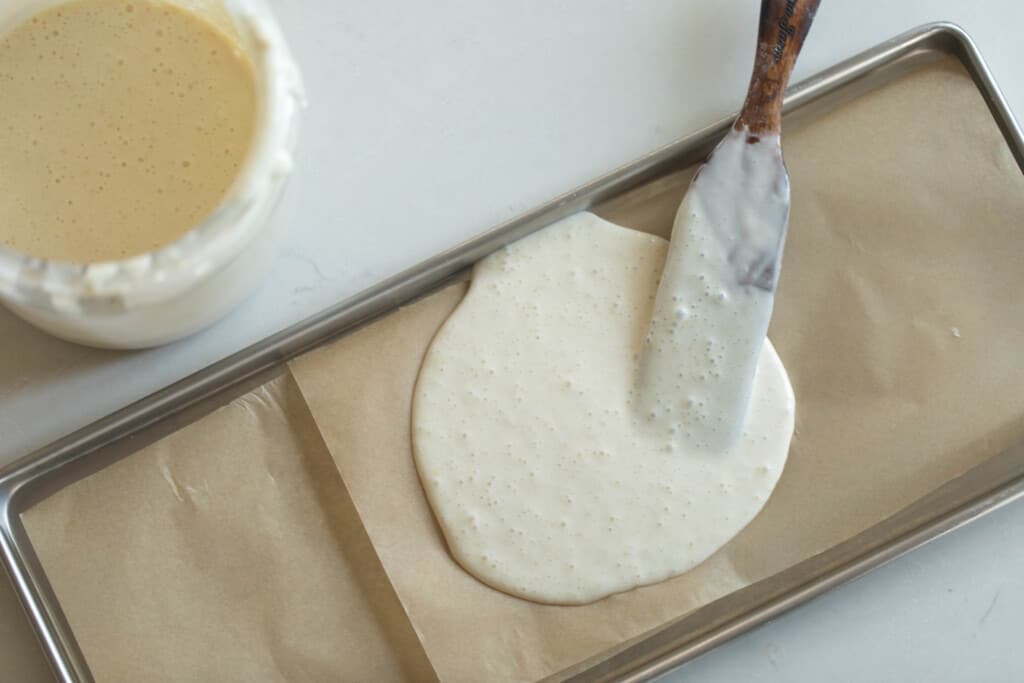
How To Dry Sourdough Starter With A Dehydrator:
Before drying, freshen it up by feeding it about 4-6 hours before. You want it nice and active.
Cut parchment paper to the size of your trays
Spread active starter in a very thin layer
Use the lowest setting to avoid killing any of the yeasts. Preferably around 95-100 degrees.
Dehydrate for 4-6 hours.
Break into crumbles and store in an air-tight container.
Freeze Drier Method:
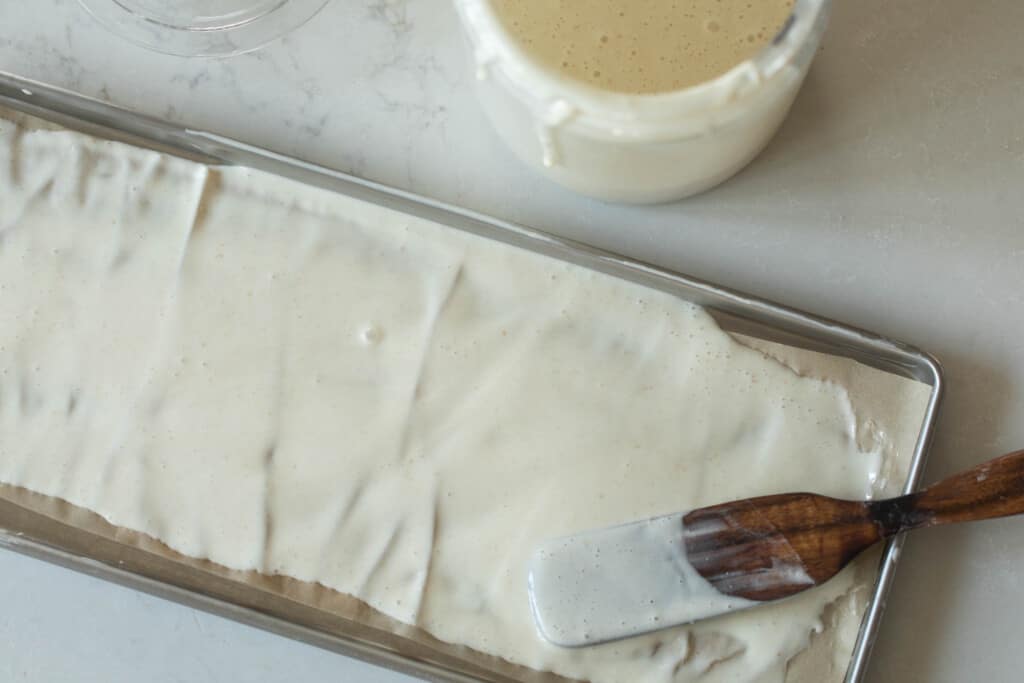
*Warning: I have had inconsistent results with freeze drying sourdough starter. It is not a method I would recommend and would suggest the other methods over freeze drying.
Line freeze dryer trays with parchment paper.
Spread active sourdough starter in a thin layer onto parchment lined trays.
Place in the freeze dryer and press start.
Once the freeze drier has worked its magic and has turned off, check to make sure it is completely dry.
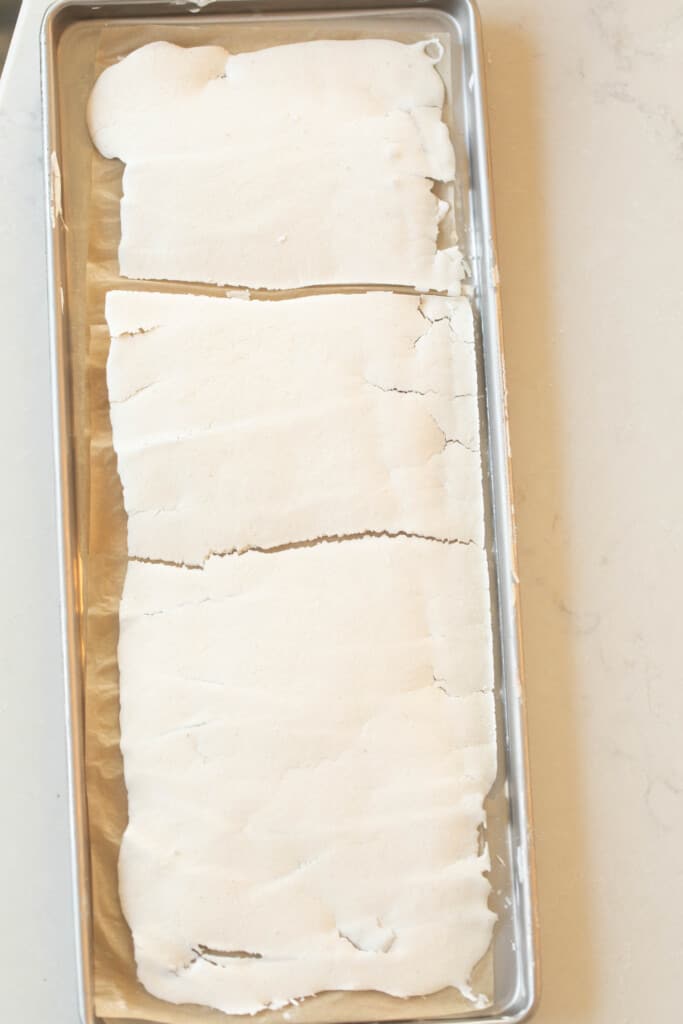
Store in an air-tight container and place in a cool dry area. You can also store in mylar bags.
Reviving Dried Sourdough Starter
Add about 1.5 tablespoons water and 1/2 tablespoon dry sourdough starter powder until dissolved. Add 1 tablespoon flour and stir until everything is combined well. Cover and allow to sit for 24 hours.
The next day, feed again with about 1 tablespoon flour and about 1/2 tablespoon water, and stir until well combined. I really do this based on consistency. It should be like thick pancake batter. Cover and allow to sit for 24 hours.
On day 4, feed the starter 1/2 cup flour and 1/3 cup water. Cover and allow to sit for 24 hours.
On day 5 there should be a lot of activity. It should be doubling in size. Add one cup of flour and 1/2 cup water to the starter and mix well. Cover.
When 5 days are up, your starter should be nice, active, and ready to use in recipes.
Feed regularly.
Low Hydration Dry Sourdough Starter
The last type of dry sourdough starter I want to chat about is a low hydration starter. This is a starter that has much less water added, can be stored in the fridge for longer term without feeding. Just using and freshening as needed.
You can convert a regular starter into a dry starter by taking one tablespoon of starter and adding 30g of water to 60g of flour. Mix well and cover. Allow to sit for 24 hours. Feed the same ratio again every 24 hours for 5 days. On the 5th day, remove 10 grams of the starter and refresh with the same ratio















Hi Lisa first I love your recipes, except the rehydrating the starter. The recipe is missing day 3 and there is no mention of discarding. I dehydrated stater just to have a backup which I needed this weekend, I accidentally discarded all my very strong starter. I was very upset with myself but I knew I had a backup. Can you please correct these errors?
I’m sorry, but I don’t see a print button anywhere. In fact I don’t see a recipe cars, just your post. What am I missing. Sorry to bother you. Thanks
This post doesn’t have a recipe card. You can press Control P on your keyboard and it will print out the page for you.
I love how informative and knowledgeable you are with sourdough. Thank you
I do not have a freeze dryer or a dehydrator so the only option seems to be leaving it out so it can air dry.
The only issue is that whenever I bring out my sourdough from the fridge I get an… infestation (?) of these fruit-ish-flies that swarm my container. I put out vinegar traps which work nicely… yet I have concerns about leaving the sourdough out to dry on the counter and them being swarmed and having fly bits in it.
Is it possible to dry it by leaving leave it in the oven (turned off) so that the flies cannot get at it? Would there be enough air flow or do I need some prayer?
Thanks
That should be fine. You could probably even turn on the light in your oven to help speed up the process.
Lisa, question for you. How can I go about using dehydrated sourdough starter in a homemade baking mix? Like to be used for biscuits, pancakes, or even cookies? I have searched maybe can’t be done as it won’t be hydrated prior to added to the mix. Complete dry form.
It needs to be hydrated for several days before you can use it. Unfortunately you cannot use it like an active yeast!
In the rehydration instructions, when do you start discarding before feeding?
After you’ve fed it for the first time.
I too do not see the print option?
It’s on the recipe card.
I have seen a video where starteris kept dormant by adding a heaping tbsp. to a jar and adding flour till you have a real dry dough ball, then add flour on top to keep out air, seal and store in fridge. To activate add water and stir.
Lisa,
In your “Reviving Sourdough Starter” instructions, you give instruction for the first 48 hours and then your next instruction say “On day 4…”. What am I supposed to do on day 3?
Sorry for the error! You can do the same instructions for day 3 as day 2.
Thanks for the prompt reply, Lisa. I’m giving my nice “new” starter (Charlie is about 2 months old now) away for Christmas gifts to the ladies in our families – we do Christmas over New Year. I have successfully made delicious bread with it from your “No Knead Sourdough Loaf” recipe. It was amazing! Thank you for sharing all your trials, errors and successes with us. You and your sweet family are such an inspiration.
Hello Lisa
I was wondering if there is a Print option for the drying methods, when I try to print the web page itself it is a mess with all the ads. I’m new to your site and getting ready to start a new adventure in making as much as possible from scratch and your recipes look amazing, I’m very excited to try some of them. I do have one last question, if I freeze some starter I’m confused on how long it would last. In one place I believe in the drying methods above you mention it would go bad quickly if you don’t dry before freezing however on the freeze method page you say it would be ok to freeze up to 12 months and no mention of drying first. How do you dry in a silicone muffin pan prior to freezing?
I hope you have a wonderful new year.
There is a button at the bottom with the instructions to be able to print the recipe!